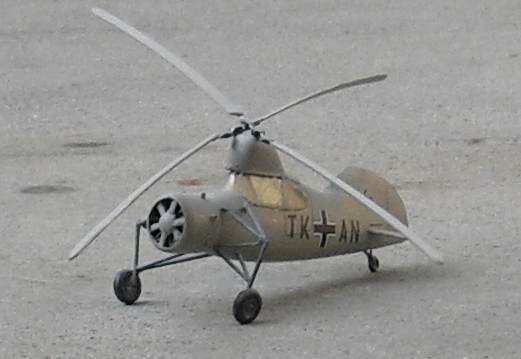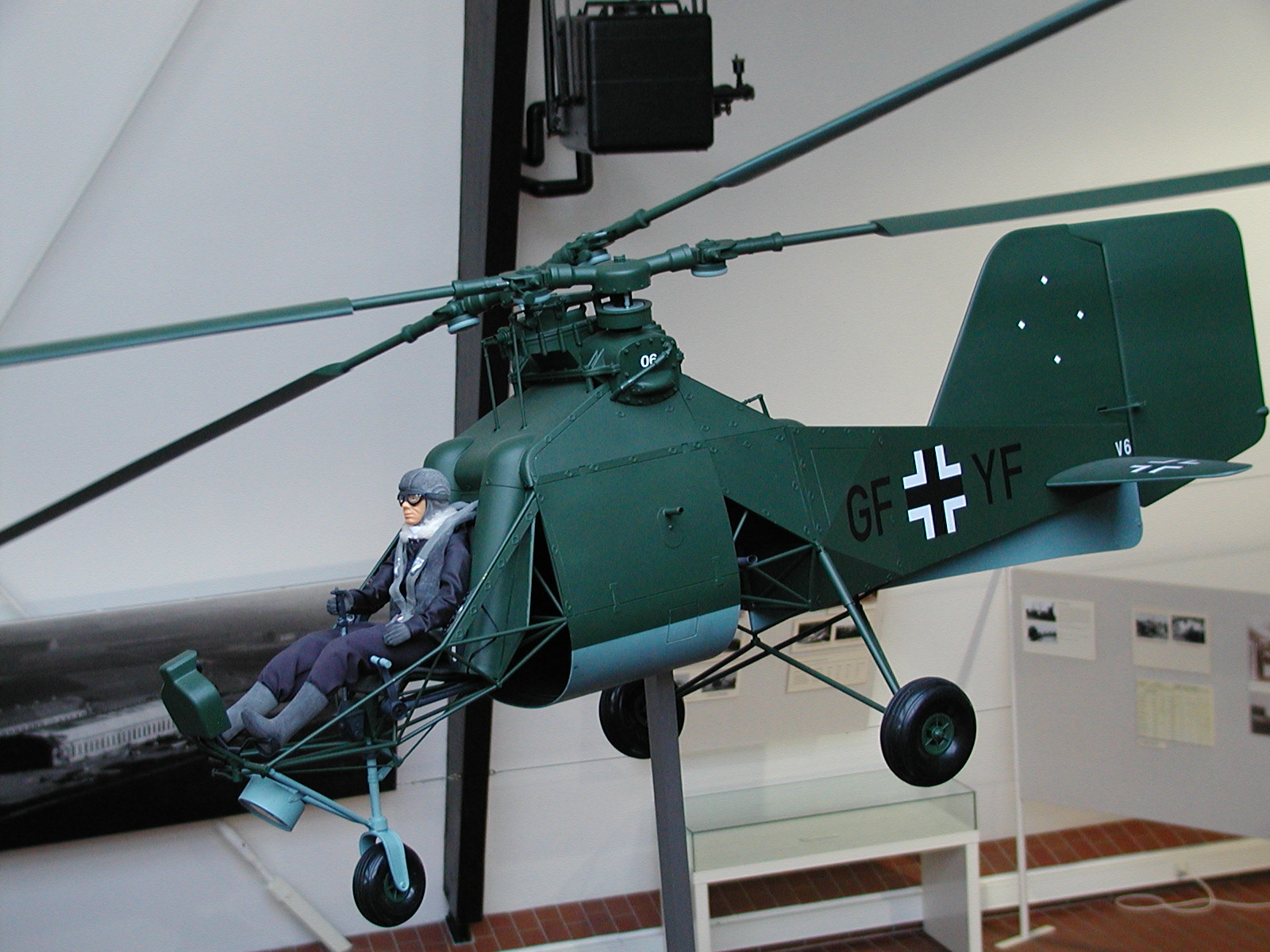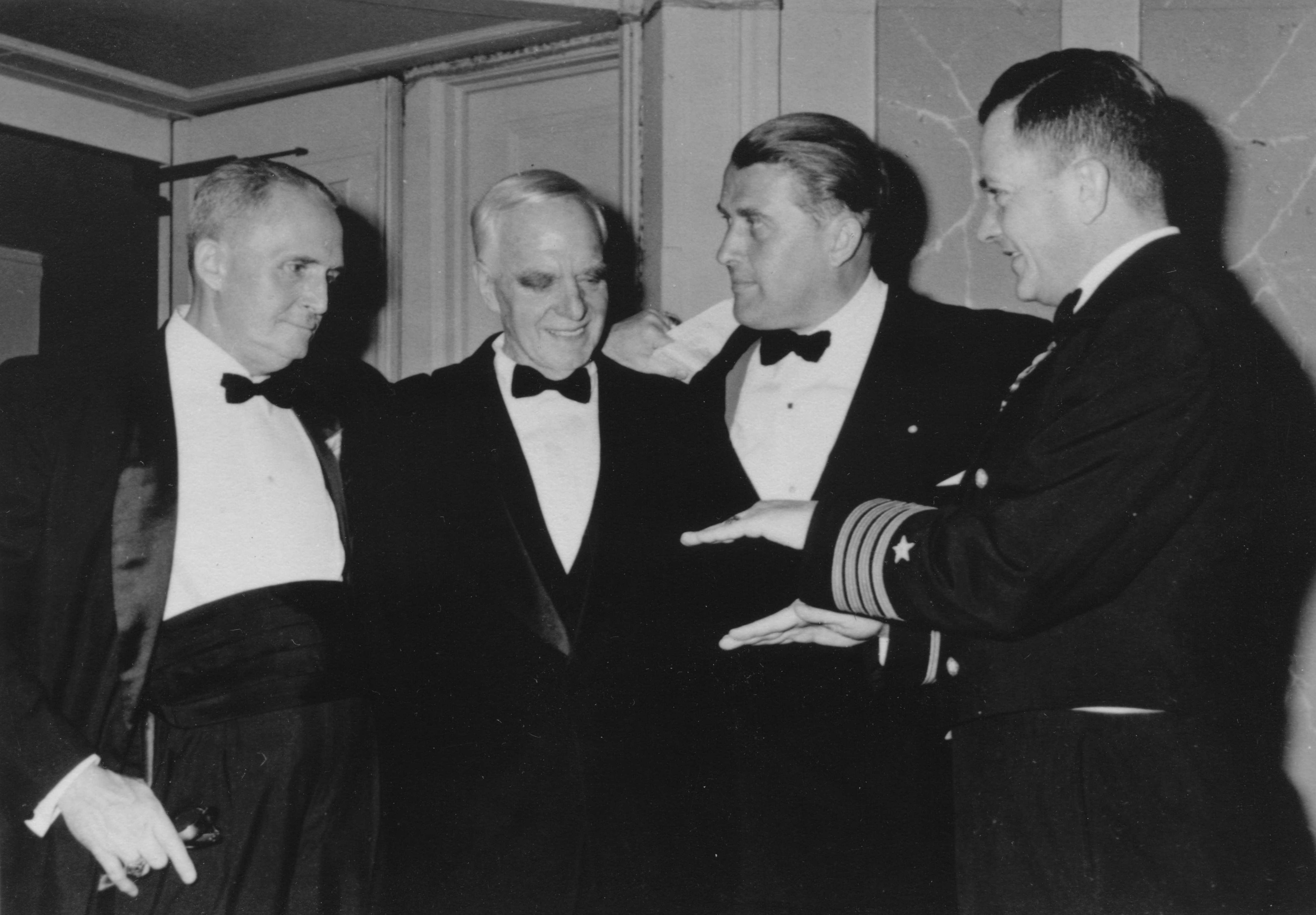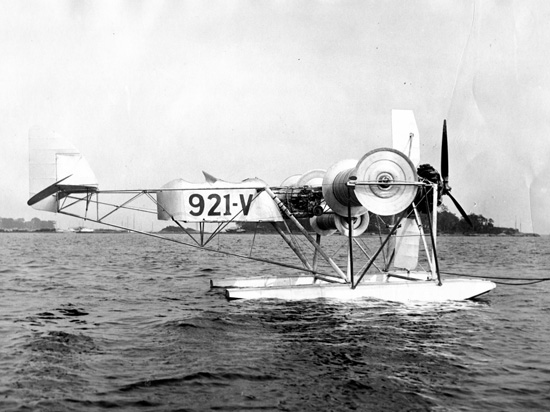Anton Flettner on:
[Wikipedia]
[Google]
[Amazon]
Anton Flettner (November 1, 1885 – December 29, 1961) was a German aviation engineer and inventor. Born in Eddersheim (today a district of


Flettner Flugzeubau GmbH
which specialized in reconnaissance helicopters for the German Luftwaffe (Air Force). Flettner's helicopter inventions were financed from wealth acquired from his ventilator business, a company that was enhanced by the skill of his wife, Lydia Freudenberg Flettner. Anton Flettner built his helicopters for the German military, primarily for navy spotter use. Although his wife was Jewish, he held a personal relationship with the head of gestapo, While the final product, the
While the final product, the
Flettner Fl 285
another reconnaissance helicopter with a two-hour flight limit and capacity to carry two small bombs, and th
a large transport helicopter project designed for approximately 20 passengers.
Image:Flettner FL 282.jpg, Flettner Fl 282 ''Kolibri'' helicopter
Image:Hohenemser_letter.jpg, Letter from Dr. Hohenemser regarding his association with Anton Flettner (page 1 of 2)
Image:Hohenemser_letter 001.jpg, Letter from Dr. Hohenemser regarding his association with Anton Flettner (page 2 of 2)
Image:Vaixell de rotor Barbara.jpg, The rotor ship "Barbara"
Image:Steering gear for vehicles flettner patent.png, Flettner's patent to a steering mechanism
Image:Flettner pictures retouched.jpg, Flettner's boyhood home in Eddersheim, Germany. Anton Flettner is on the far right.
Image:Flettner kolibri.gif, Flettner Fl 282 Kolibri
Image:Eddersheim, Friedhof, Grab Flettner.JPG, Tomb of Anton Flettner
Image:Bundesarchiv Bild 102-11248, Berlin, Eröffnung der Automobilausstellung.jpg, 1931 photo of the Flettner-Krupp-Grosskraftwagen, the largest German truck, which is 15 tons. The payload and is 14 m long and it is powered by a 150 P.S. engine.
Image:Flettner 282 airborne.jpg, Flettner Fl 282 during flight trials after World War II, with US markings
 Upon the war's conclusion, Anton Flettner was held in the "Dustbin" interrogation camp at
Upon the war's conclusion, Anton Flettner was held in the "Dustbin" interrogation camp at Anton Flettner; Hubschraubermuseum Bückeburg
/ref> Among his many distinctions, Anton Flettner was an honorary member of the American Helicopter Society and the Convertible Aircraft Pioneers. Flettner's birthplace home and tomb are national historic protected monuments in Germany.
Flettner Fl 285
ref name="flugzeugbau" />
ref name="flugzeugbau" />
Flettner ventilator
* Gyrodynes and Heliplanes * Charles Kaman
New York Times post about Anton FlettnerThe story of the rotor
o
Open LibraryFlettner rotor ventilatorFlettner Ventilator LimitedFlettner Fl 285Norwegian projectDr. Techn. Olav OlsenSeawind
{{DEFAULTSORT:Flettner, Anton 1885 births 1961 deaths Aviation pioneers German emigrants to the United States German people of World War II German aerospace engineers 20th-century German inventors People from Main-Taunus-Kreis Engineers from Hesse
Hattersheim am Main
Hattersheim am Main () is a town in the Main-Taunus district, Hesse (Germany) and part of the Frankfurt Rhein-Main urban area.
Geography
Neighbouring towns
Hattersheim borders the city of Frankfurt in the northeast, in the southeast with Kels ...
), Flettner made important contributions to airplane, helicopter, vessel, and automobile designs.
After serving Germany in both World Wars, Anton Flettner emigrated to the United States post World War II
World War II or the Second World War, often abbreviated as WWII or WW2, was a world war that lasted from 1939 to 1945. It involved the vast majority of the world's countries—including all of the great powers—forming two opposing ...
as a consultant to the office of Naval Research at the United States Navy
The United States Navy (USN) is the maritime service branch of the United States Armed Forces and one of the eight uniformed services of the United States. It is the largest and most powerful navy in the world, with the estimated tonnage ...
.
Anton Flettner attended the Fulda State Teachers College in Fulda, Germany. He was the village teacher in Pfaffenwiesbach from 1906 to 1909. Flettner subsequently taught high school mathematics and physics in Frankurt, where he developed ideas that would assist Germany in World War I.
Flettner revolutionized the art of harnessing the wind, used essentially in an unaltered form for thousands of years—the canvas sail—by a modern machine—the Flettner Rotor ship—that could permit ocean liners to reduce their crews by two-thirds and save 90 percent in fuel.
World War I
From 1914 to 1918 Anton Flettner worked at the German Ministry for War in the development of remote controls for air, water, and land vehicles. While employed under the aegis of Graf Zeppelin, Flettner also developed pilotless aircraft projects. At the age of 29, Flettner presented his first invention, a steerable torpedo, to the Kriegsmarine (German Imperial Navy) ofWorld War I
World War I (28 July 1914 11 November 1918), often abbreviated as WWI, was one of the deadliest global conflicts in history. Belligerents included much of Europe, the Russian Empire, the United States, and the Ottoman Empire, with fightin ...
. This, and his next invention, a remote-controlled combat car, which was presented to the Heer (German Army), were rejected because they were not considered to be technically feasible. However, Flettner's efforts culminated in the prototype Siemens Schuckert Werke 1000 kg wire guided air to surface missile of 1918.
During World War I
World War I (28 July 1914 11 November 1918), often abbreviated as WWI, was one of the deadliest global conflicts in history. Belligerents included much of Europe, the Russian Empire, the United States, and the Ottoman Empire, with fightin ...
, Flettner developed the servo tab
__NOTOC__
A servo tab is a small hinged device installed on an aircraft control surface to assist the movement of the control surfaces. Introduced by the German firm Flettner, servo tabs were formerly known as Flettner tabs. Servo tabs are not ...
/ anti-servo tab. The servo tab
__NOTOC__
A servo tab is a small hinged device installed on an aircraft control surface to assist the movement of the control surfaces. Introduced by the German firm Flettner, servo tabs were formerly known as Flettner tabs. Servo tabs are not ...
evolved into the "trim tab" which is still in use on all airplanes and many large vessels. Trim tabs are extremely useful in moving large rudders on vessels with vastly reduced power.

Savonius collaboration
In 1923, Finnish architectSigurd Johannes Savonius
Sigurd Johannes Savonius (2 November 1884 – 31 May 1931) was a Finnish people, Finnish architect and inventor. He is known especially for the Savonius wind turbine, which he invented in 1924.
Life and work
Savonius was born in Hämeen ...
took interest in Flettner's rotor ship, and the two began a collaboration. By the next year, the architect had invented the Savonius wind turbine
Savonius wind turbines are a type of vertical-axis wind turbine (VAWT), used for converting the force of the wind into torque on a rotating shaft. The turbine consists of a number of aerofoils, usually—but not always—vertically mounted on a ro ...
, and by 1930 had patented a ventilation device based on the wind turbine. The patent was later acquired by Flettner's firm Flettner Ventilator Limited, which still manufactures modern versions of the device in Britain. It has been widely used on buses, vans, boats, railroad cars, campervans, and trucks to assist cooling in warm weather.
Other post-World-War-I work
FollowingWorld War I
World War I (28 July 1914 11 November 1918), often abbreviated as WWI, was one of the deadliest global conflicts in history. Belligerents included much of Europe, the Russian Empire, the United States, and the Ottoman Empire, with fightin ...
, Flettner was named Managing Director of the Institute for Aero and Hydro Dynamics in Amsterdam
Amsterdam ( , , , lit. ''The Dam on the River Amstel'') is the capital and most populous city of the Netherlands, with The Hague being the seat of government. It has a population of 907,976 within the city proper, 1,558,755 in the urban ar ...
. He held that post until 1931.
With assistance from German physicist Albert Betz, Swiss aeronautical engineer Jakob Ackeret
Jakob Ackeret, FRAeS (17 March 1898 – 27 March 1981) was a Swiss aeronautical engineer. He is widely viewed as one of the foremost aeronautics experts of the 20th century.
Birth and education
Jakob Ackeret was born in 1898 in Switzerland. He ...
, German engineer Ludwig Prandtl
Ludwig Prandtl (4 February 1875 – 15 August 1953) was a German fluid dynamicist, physicist and aerospace scientist. He was a pioneer in the development of rigorous systematic mathematical analyses which he used for underlying the science of ...
and German theoretical physicist Albert Einstein
Albert Einstein ( ; ; 14 March 1879 – 18 April 1955) was a German-born theoretical physicist, widely acknowledged to be one of the greatest and most influential physicists of all time. Einstein is best known for developing the theory ...
, Anton Flettner constructed an experimental rotor vessel, the ''Buckau'', later renamed the ''Baden-Baden'', in October 1924 at the Friedrich Krupp Germaniawerft Friedrich may refer to:
Names
*Friedrich (surname), people with the surname ''Friedrich''
*Friedrich (given name), people with the given name ''Friedrich''
Other
*Friedrich (board game), a board game about Frederick the Great and the Seven Years' ...
. The ''Buckau'' was a schooner refitted with two rotating 50-foot cylinders and was the first vessel built with a propulsion system based on the Magnus effect
The Magnus effect is an observable phenomenon commonly associated with a spinning object moving through a fluid. The path of the spinning object is deflected in a manner not present when the object is not spinning. The deflection can be expl ...
. Flettner came upon the idea while at the beach with his wife. Flettner used sand, flowing over his rotating hand, to describe the Magnus effect and realized its potential for sail propulsion. The ''Baden-Baden'' crossed the Atlantic
The Atlantic Ocean is the second-largest of the world's five oceans, with an area of about . It covers approximately 20% of Earth's surface and about 29% of its water surface area. It is known to separate the " Old World" of Africa, Europe an ...
in 1926. It could outsail normal schooners under moderate to heavy winds, but was destroyed by a storm in 1931. A commercial rotor ship, the ''Barbara'', was also built, and sailed to the United States.
In 1926, Anton Flettner shifted his focus to aviation in founding his own company, the Anton Flettner Aircraft Corporation in Berlin, aiming at the application of the Flettner-rotor as a wing replacement on large wind turbines. In 1935, Flettner built a German night reconnaissance and anti-submarine autogyro
An autogyro (from Greek and , "self-turning"), also known as a ''gyroplane'', is a type of rotorcraft that uses an unpowered rotor in free autorotation to develop lift. Forward thrust is provided independently, by an engine-driven propeller. Whi ...
called the Fl 184. Flettner followed this accomplishment by building the Flettner Fl 185
The Flettner Fl 185 was an experimental German gyrodyne developed by Anton Flettner, a machine which could fly both as a helicopter and as a gyroplane.
Design and development
This aircraft was developed in 1936 with support of the ''Kriegsmarine ...
in 1936, an experimental German
German(s) may refer to:
* Germany (of or related to)
** Germania (historical use)
* Germans, citizens of Germany, people of German ancestry, or native speakers of the German language
** For citizens of Germany, see also German nationality law
**Ge ...
gyrodyne
A gyrodyne is a type of VTOL aircraft with a helicopter rotor-like system that is driven by its engine for takeoff and landing only, and includes one or more conventional propeller or jet engines to provide forward thrust during cruising flig ...
, which could fly as both a helicopter
A helicopter is a type of rotorcraft in which lift and thrust are supplied by horizontally spinning rotors. This allows the helicopter to take off and land vertically, to hover, and to fly forward, backward and laterally. These attributes ...
and as a gyroplane
An autogyro (from Greek and , "self-turning"), also known as a ''gyroplane'', is a type of rotorcraft that uses an unpowered rotor in free autorotation to develop lift. Forward thrust is provided independently, by an engine-driven propeller. Whi ...
.
In 1938 Flettner, together with Kurt Hohenemser, built the Flettner Fl 265
The Flettner Fl 265 was an experimental helicopter designed by Anton Flettner.
Design and development
This helicopter, developed in 1938 with the support of Nazi Germany's ''Kriegsmarine'', made it possible, for the first time, to transition fro ...
. The Flettner Fl 265
The Flettner Fl 265 was an experimental helicopter designed by Anton Flettner.
Design and development
This helicopter, developed in 1938 with the support of Nazi Germany's ''Kriegsmarine'', made it possible, for the first time, to transition fro ...
as the likely pioneering example of a twin-lift rotor synchropter, addressed the problem of torque compensation as the first helicopter with intermeshing rotors
Intermeshing rotors on a helicopter are a set of two rotors turning in opposite directions, with each rotor mast mounted with a slight angle to the other, in a transversely symmetrical manner, so that the blades intermesh without colliding. T ...
(Flettner double rotor).

World War II
DuringWorld War II
World War II or the Second World War, often abbreviated as WWII or WW2, was a world war that lasted from 1939 to 1945. It involved the vast majority of the world's countries—including all of the great powers—forming two opposing ...
, Anton Flettner headeFlettner Flugzeubau GmbH
which specialized in reconnaissance helicopters for the German Luftwaffe (Air Force). Flettner's helicopter inventions were financed from wealth acquired from his ventilator business, a company that was enhanced by the skill of his wife, Lydia Freudenberg Flettner. Anton Flettner built his helicopters for the German military, primarily for navy spotter use. Although his wife was Jewish, he held a personal relationship with the head of gestapo,
Heinrich Himmler
Heinrich Luitpold Himmler (; 7 October 1900 – 23 May 1945) was of the (Protection Squadron; SS), and a leading member of the Nazi Party of Germany. Himmler was one of the most powerful men in Nazi Germany and a main architect of th ...
. Himmler had Flettner's wife and family escorted safely to Sweden for the duration of the war. Anton Flettner's partner and confidant was Dr. Kurt Hohenemser, a brilliant and thorough engineer who developed the details necessary for the success of Flettner's helicopters. Dr. Hohenemser's father was also Jewish, yet both remained unharmed during their tenure together throughout the war as they worked to develop the helicopter for military use.
 While the final product, the
While the final product, the Flettner Fl 282 Kolibri
The Flettner Fl 282 ''Kolibri'' ("Hummingbird") is a single-seat intermeshing rotor helicopter, or ''synchropter'', produced by Anton Flettner of Germany. According to Yves Le Bec, the Flettner Fl 282 was the world's first series production heli ...
("Hummingbird"), could be factory-assembled, Flettner and Hohenemser insisted that they were the only ones who were capable of assembling the complex intermeshing rotor gearbox assembly. Plans for mass production of 1,000 Flettner Fl 282
The Flettner Fl 282 ''Kolibri'' ("Hummingbird") is a single-seat intermeshing rotor helicopter, or ''synchropter'', produced by Anton Flettner of Germany. According to Yves Le Bec, the Flettner Fl 282 was the world's first series production hel ...
helicopters by BMW were disrupted when allied forces bombed the designated factory.
At least two other Flettner helicopters were under development when World War II ended. They were thFlettner Fl 285
another reconnaissance helicopter with a two-hour flight limit and capacity to carry two small bombs, and th
a large transport helicopter project designed for approximately 20 passengers.
Photo gallery
Post World War II
 Upon the war's conclusion, Anton Flettner was held in the "Dustbin" interrogation camp at
Upon the war's conclusion, Anton Flettner was held in the "Dustbin" interrogation camp at Kransberg Castle
Kransberg Castle is situated on a steep rock near Kransberg (incorporated into Usingen in 1971), a village with about 800 inhabitants in the Taunus mountains in the German state of Hesse. The medieval building, which acquired its current appearan ...
. After 1945, Flettner, along with many other aviation pioneers, was brought to the United States as part of Operation Paperclip
Operation Paperclip was a secret United States intelligence program in which more than 1,600 German scientists, engineers, and technicians were taken from the former Nazi Germany to the U.S. for government employment after the end of World War ...
. Flettner and his partner, Kurt Hohenemser, were among the first German emigrants into the United States
The United States of America (U.S.A. or USA), commonly known as the United States (U.S. or US) or America, is a country primarily located in North America. It consists of 50 states, a federal district, five major unincorporated territori ...
after World War II
World War II or the Second World War, often abbreviated as WWII or WW2, was a world war that lasted from 1939 to 1945. It involved the vast majority of the world's countries—including all of the great powers—forming two opposing ...
.
Flettner started Flettner Aircraft Corporation, which developed helicopters for the U.S. military.
In 1949, Flettner employed Kurt Hohenemser as a consultant to the Flettner Aircraft Corporation. Flettner and Kurt Hohenemser, who together developed numerous patents in Germany, kept in close contact after both men emigrated to the United States.
Flettner's company in the U.S. was not commercially successful, but his work was shared with the US Army Air Forces
The United States Army Air Forces (USAAF or AAF) was the major land-based aerial warfare service component of the United States Army and ''de facto'' aerial warfare service branch of the United States during and immediately after World War II ...
. Throughout his 14 years in the United States, Flettner was active in carrying out research projects for the US Army
The United States Army (USA) is the land service branch of the United States Armed Forces. It is one of the eight U.S. uniformed services, and is designated as the Army of the United States in the U.S. Constitution.Article II, section 2, cla ...
, US Air Force, and the US Navy
The United States Navy (USN) is the maritime service branch of the United States Armed Forces and one of the eight uniformed services of the United States. It is the largest and most powerful navy in the world, with the estimated tonnage ...
.
Flettner became the chief designer of Kaman Aircraft
Kaman Corporation is an American aerospace company, with headquarters in Bloomfield, Connecticut. It was founded in 1945 by Charles Kaman. During the first ten years the company operated exclusively as a designer and manufacturer of several h ...
and many of the Flettner design concepts are found in Kaman helicopters of later years.
Today the Flettner rotor is in operation as a supplemental propulsion system for transport and research vessels. There are two ships utilizing the concept of the Flettner rotor in a modified form, the turbosail
The turbosail or French is a marine propulsion system using a sail-like vertical surface and a powered boundary layer control system to improve lift across a wide angle of attack. This allows the sail to power the boat in any direction simply by ...
Acyone developed by Jacques-Yves Cousteau in 1985 and the E-Ship 1, a cargo ship that made its first voyage in 2010. Albert Einstein
Albert Einstein ( ; ; 14 March 1879 – 18 April 1955) was a German-born theoretical physicist, widely acknowledged to be one of the greatest and most influential physicists of all time. Einstein is best known for developing the theory ...
praised the Flettner Rotor ship as having great practical importance.
Anton Flettner's colleague and former partner, Kurt Hohenemser, worked his remaining years in the United States to prove Flettner's idea that properly designed flexible helicopter-type rotors are more suitable for producing electricity from the wind than rigid airplane-type rotors. An offshore wind energy project announced in February 2017, involving Seawind Ocean Technology B.V., aims to demonstrate the wind energy applications put forth by Anton Flettner, Kurt Hohenemser, and Glidden Doman
Glidden Doman (January 28, 1921 – June 6, 2016) was an American aeronautical engineer and pioneer in helicopters and modern wind turbines. He founded one of America's original six helicopter companies (Doman Helicopters, Inc.) after making majo ...
in harsh wind and sea conditions.
Anton Flettner died at age 76 in New York City on December 29, 1961./ref> Among his many distinctions, Anton Flettner was an honorary member of the American Helicopter Society and the Convertible Aircraft Pioneers. Flettner's birthplace home and tomb are national historic protected monuments in Germany.

Aircraft built by Flettner Flugzeugbau GmbH
* Flettner Fl 184 *Flettner Fl 185
The Flettner Fl 185 was an experimental German gyrodyne developed by Anton Flettner, a machine which could fly both as a helicopter and as a gyroplane.
Design and development
This aircraft was developed in 1936 with support of the ''Kriegsmarine ...
*Flettner Fl 265
The Flettner Fl 265 was an experimental helicopter designed by Anton Flettner.
Design and development
This helicopter, developed in 1938 with the support of Nazi Germany's ''Kriegsmarine'', made it possible, for the first time, to transition fro ...
*Flettner Fl 282
The Flettner Fl 282 ''Kolibri'' ("Hummingbird") is a single-seat intermeshing rotor helicopter, or ''synchropter'', produced by Anton Flettner of Germany. According to Yves Le Bec, the Flettner Fl 282 was the world's first series production hel ...
Flettner Fl 285
ref name="flugzeugbau" />
ref name="flugzeugbau" />
See also
*Autogyro
An autogyro (from Greek and , "self-turning"), also known as a ''gyroplane'', is a type of rotorcraft that uses an unpowered rotor in free autorotation to develop lift. Forward thrust is provided independently, by an engine-driven propeller. Whi ...
s
* Flettner ship, a schooner that derives its thrust using the Magnus effect
The Magnus effect is an observable phenomenon commonly associated with a spinning object moving through a fluid. The path of the spinning object is deflected in a manner not present when the object is not spinning. The deflection can be expl ...
* Flettner airplane
A Flettner airplane is a type of rotor airplane which uses a Flettner rotor to provide lift. The rotor comprises a spinning cylinder with circular end plates and, in an aircraft, spins about a spanwise horizontal axis. When the aircraft moves ...
, an airplane that derives its lift using the Magnus effect
The Magnus effect is an observable phenomenon commonly associated with a spinning object moving through a fluid. The path of the spinning object is deflected in a manner not present when the object is not spinning. The deflection can be expl ...
* Flettner Fl 184 helicopter-gyroplane hybrid
* Flettner Fl 185
The Flettner Fl 185 was an experimental German gyrodyne developed by Anton Flettner, a machine which could fly both as a helicopter and as a gyroplane.
Design and development
This aircraft was developed in 1936 with support of the ''Kriegsmarine ...
helicopter
* Flettner Fl 265
The Flettner Fl 265 was an experimental helicopter designed by Anton Flettner.
Design and development
This helicopter, developed in 1938 with the support of Nazi Germany's ''Kriegsmarine'', made it possible, for the first time, to transition fro ...
helicopter
* Flettner Fl 282
The Flettner Fl 282 ''Kolibri'' ("Hummingbird") is a single-seat intermeshing rotor helicopter, or ''synchropter'', produced by Anton Flettner of Germany. According to Yves Le Bec, the Flettner Fl 282 was the world's first series production hel ...
"Kolibri" helicopter
Flettner ventilator
* Gyrodynes and Heliplanes * Charles Kaman
References
External links
New York Times post about Anton Flettner
o
Open Library
{{DEFAULTSORT:Flettner, Anton 1885 births 1961 deaths Aviation pioneers German emigrants to the United States German people of World War II German aerospace engineers 20th-century German inventors People from Main-Taunus-Kreis Engineers from Hesse